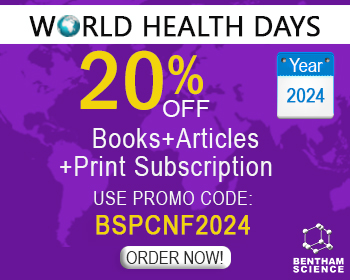Abstract
Chronic wounds are a remarkable cause of morbidity, requiring long-time treatments with a significant impact on the quality of life and high costs for public health. Although there are a variety of topical skin preparations commercially available, they have several limitations that frequently impair wound healing, such as drug instability, toxicity, limited time of action and ineffective skin permeation. In recent years, researchers have focused on the development of new effective treatments for wound healing and shown frequent interest in nanometric drug delivery systems to overcome such obstacles. In dermatology, lipid nanoparticles (LNPs) have received great attention from researchers due to their great functionalities, greater adhesion to the skin and film formation, enabling the hydration and maintenance of skin integrity, as well as present a more effective penetration through the skin barrier. This review provides an update on topical formulations based on Solid Lipid Nanoparticles (SLNs) and Nanostructured Lipid Carriers (NLCs) as wound healing treatments. Both SLNs and NLCs are able to increase solubility and stability of active pharmaceutical ingredients and increase skin penetration compared to the free drugs. Additionally, SLNs and NLCs can increase pharmacological activity, increase the release profile of the drugs, promote synergistic effects and improve the sensory properties of the final formulation. Topical dosage forms containing nanoparticles have been extensively evaluated for wound healing activity, mainly the dressings, films and scaffolds. Therefore, lipid nanoparticles have contributed in improving wound healing therapies when incorporated into other dosage forms with better efficacy and lesser adverse effects than conventional formulations.
Keywords: Nanocarriers, lipid nanoparticles, cicatrization, wound healing, topical use, skin penetration.
[http://dx.doi.org/10.1155/2019/3706315 ] [PMID: 31275545]
[http://dx.doi.org/10.1159/000339613 ] [PMID: 22797712]
[http://dx.doi.org/10.1159/000454919 ] [PMID: 27974711]
[http://dx.doi.org/10.1111/j.1600-0625.2012.01542.x ] [PMID: 22742728]
[http://dx.doi.org/10.1007/s00441-018-2830-1 ] [PMID: 29637308]
[http://dx.doi.org/10.1101/cshperspect.a023267 ] [PMID: 25561722]
[http://dx.doi.org/10.1111/bjd.13954 ] [PMID: 26175283]
[http://dx.doi.org/10.1590/abd1806-4841.20142687 ] [PMID: 24937814]
[http://dx.doi.org/10.6018/eglobal.16.2.251311]
[http://dx.doi.org/10.1111/wrr.12102 ] [PMID: 24134795]
[http://dx.doi.org/10.1007/s00018-016-2268-0 ] [PMID: 27180275]
[http://dx.doi.org/10.1126/science.aam7928]
[http://dx.doi.org/10.1126/scitranslmed.3009337 ] [PMID: 25473038]
[http://dx.doi.org/10.4103/0970-0358.101321 ] [PMID: 23162238]
[http://dx.doi.org/10.3390/ijms17122085 ] [PMID: 27973441]
[http://dx.doi.org/10.2174/1381612825666190926163431 ] [PMID: 31556852]
[http://dx.doi.org/10.1111/dth.12055 ] [PMID: 23742280]
[http://dx.doi.org/10.1007/s12325-017-0478-y ] [PMID: 28108895]
[http://dx.doi.org/10.1177/1203475416664037 ] [PMID: 27530398]
[http://dx.doi.org/10.1111/iwj.12718 ] [PMID: 28054467]
[http://dx.doi.org/10.2174/0929867326666190624155938 ] [PMID: 31232233]
[http://dx.doi.org/10.2174/1567201813666160104130505 ] [PMID: 26725723]
[http://dx.doi.org/10.5301/jabfm.5000243 ] [PMID: 26616753]
[http://dx.doi.org/10.3390/molecules24203759 ] [PMID: 31635398]
[http://dx.doi.org/10.1007/s11094-019-02017-9]
[http://dx.doi.org/10.2174/1381612825666190118155843 ] [PMID: 30657036]
[http://dx.doi.org/10.1016/j.jconrel.2016.07.027 ] [PMID: 27449743]
[http://dx.doi.org/10.1016/j.ejps.2017.11.023 ] [PMID: 29183800]
[http://dx.doi.org/10.1186/s40824-019-0166-x ] [PMID: 31832232]
[http://dx.doi.org/10.1007/978-81-322-3655-9_3]
[http://dx.doi.org/10.2147/ijn.s36684 ] [PMID: 23093904]
[http://dx.doi.org/10.1016/j.addr.2011.02.001 ] [PMID: 21315781]
[http://dx.doi.org/10.1016/j.ijpharm.2019.118918 ] [PMID: 31870954]
[http://dx.doi.org/10.1016/j.ejpb.2015.06.020] [PMID: 26144664]
[http://dx.doi.org/10.2174/1381612825666190903155321 ] [PMID: 31481000]
[http://dx.doi.org/10.15171/apb.2015.043 ] [PMID: 26504751]
[http://dx.doi.org/10.1016/j.ejpb.2018.10.017 ] [PMID: 30463794]
[http://dx.doi.org/10.1016/j.ejps.2012.05.010 ] [PMID: 22664358]
[http://dx.doi.org/10.1016/j.colsurfb.2018.07.065 ] [PMID: 30081382]
[http://dx.doi.org/10.1088/1742-6596/304/1/012032]
[http://dx.doi.org/10.1016/j.ijpharm.2017.01.045 ] [PMID: 28131849]
[http://dx.doi.org/10.1007/978-3-319-10711-0_2]
[http://dx.doi.org/10.1016/B978-0-12-813687-4.00002-5]
[http://dx.doi.org/10.1016/j.jtcme.2015.12.002 ] [PMID: 28053891]
[http://dx.doi.org/10.1016/j.ijbiomac.2016.08.076] [PMID: 27590536]
[http://dx.doi.org/10.1016/j.msec.2019.109804 ] [PMID: 31349527]
[http://dx.doi.org/10.1016/j.colsurfb.2019.110382 ] [PMID: 31352250]
[http://dx.doi.org/10.1016/j.jddst.2019.01.008]
[http://dx.doi.org/10.2147/DDDT.S85041 ] [PMID: 26203224]
[http://dx.doi.org/10.1007/s13197-017-2525-8 ] [PMID: 28416863]
[http://dx.doi.org/10.1177/0885328219851195 ] [PMID: 31104542]
[http://dx.doi.org/10.1080/03639045.2018.1492607 ] [PMID: 29938544]
[http://dx.doi.org/10.15171/apb.2016.060 ] [PMID: 27766232]
[http://dx.doi.org/10.15171/apb.2018.046 ] [PMID: 30276135]
[http://dx.doi.org/10.1016/j.peptides.2011.06.005 ] [PMID: 21693141]
[http://dx.doi.org/10.1016/j.jconrel.2014.08.016 ] [PMID: 25173841]
[http://dx.doi.org/10.1021/acs.molpharmaceut.6b00099 ] [PMID: 27182713]
[http://dx.doi.org/10.1016/j.ejpb.2012.11.022 ] [PMID: 23207329]
[http://dx.doi.org/10.1021/acs.molpharmaceut.9b00527 ] [PMID: 31318574]
[http://dx.doi.org/10.1166/jnn.2015.9184 ] [PMID: 26328443]
[http://dx.doi.org/10.3109/10837450.2013.763261 ] [PMID: 23356887]
[http://dx.doi.org/10.1016/j.colsurfb.2019.110749 ] [PMID: 31927466]
[http://dx.doi.org/10.1016/j.ijpharm.2012.08.003 ] [PMID: 22903049]
[http://dx.doi.org/10.1016/B978-0-12-813687-4.00001-3]
[http://dx.doi.org/10.1007/s10787-017-0438-9 ] [PMID: 29404883]
[http://dx.doi.org/10.1080/21691401.2019.1582539 ] [PMID: 30857435]
[http://dx.doi.org/10.1016/j.colsurfa.2020.124414]
[http://dx.doi.org/10.1016/j.colsurfa.2018.12.043]
[http://dx.doi.org/10.1007/s10787-018-0510-0 ] [PMID: 29980963]
[http://dx.doi.org/10.1016/j.indcrop.2016.03.002]
[http://dx.doi.org/10.1016/j.jep.2008.07.023 ] [PMID: 18703127]
[http://dx.doi.org/10.1590/1516-3180.20141326T1 ] [PMID: 25351761]
[http://dx.doi.org/10.1016/j.ijpharm.2018.12.010 ] [PMID: 30553008]
[http://dx.doi.org/10.1016/j.ijpharm.2016.11.006 ] [PMID: 27825864]
[http://dx.doi.org/10.2174/1389201017666160721123109 ] [PMID: 27640646]
[http://dx.doi.org/10.1016/j.lfs.2014.08.016 ] [PMID: 25200875]
[http://dx.doi.org/10.1016/j.colsurfb.2016.11.036 ] [PMID: 27918967]
[http://dx.doi.org/10.1016/j.drudis.2017.07.001 ] [PMID: 28711364]
[http://dx.doi.org/10.1016/j.colsurfa.2016.06.054]
[http://dx.doi.org/10.1016/j.colsurfb.2018.01.053 ] [PMID: 29413607]
[http://dx.doi.org/10.1016/j.jep.2012.07.028 ] [PMID: 22885071]
[http://dx.doi.org/10.1038/emm.2017.151 ] [PMID: 29075038]
[http://dx.doi.org/10.2147/IJN.S215835 ] [PMID: 31749618]
[http://dx.doi.org/10.1038/s41401-019-0288-7 ] [PMID: 31534201]
[http://dx.doi.org/10.2478/s11532-014-0503-9]
[http://dx.doi.org/10.1016/j.ces.2019.01.044]
[http://dx.doi.org/10.1016/j.msec.2016.03.087 ] [PMID: 27127051]
[http://dx.doi.org/10.1016/j.msec.2019.110412 ] [PMID: 31923989]
[http://dx.doi.org/10.1016/j.ejpb.2016.04.006 ] [PMID: 27080206]
[http://dx.doi.org/10.1016/j.ejpb.2016.06.013 ] [PMID: 27329001]
[http://dx.doi.org/10.1016/j.jddst.2019.05.004]
[http://dx.doi.org/10.2478/acph-2019-0049 ] [PMID: 31639097]
[http://dx.doi.org/10.1016/j.jddst.2019.101421]
[http://dx.doi.org/10.1016/j.jcis.2017.09.045 ] [PMID: 28934610]
[http://dx.doi.org/10.1208/s12249-019-1333-z ] [PMID: 30771030]
[http://dx.doi.org/10.12968/jowc.2009.18.1.32146 ] [PMID: 19131916]
[http://dx.doi.org/10.1111/j.1464-5491.2011.03309.x ] [PMID: 21480976]
[http://dx.doi.org/10.1016/j.foot.2019.03.007 ] [PMID: 30999080]
[http://dx.doi.org/10.1016/j.carbpol.2015.10.091 ] [PMID: 26686133]
[http://dx.doi.org/10.1080/03639045.2017.1391832 ] [PMID: 29043860]
[http://dx.doi.org/10.1016/j.jddst.2017.08.001]
[http://dx.doi.org/10.3892/mmr.2014.2277 ] [PMID: 24890117]
[http://dx.doi.org/10.1007/s00592-008-0054-7 ] [PMID: 18758684]
[http://dx.doi.org/10.3390/ijms18122548 ] [PMID: 29182532]
[http://dx.doi.org/10.1111/wrr.12376 ] [PMID: 26710090]
[http://dx.doi.org/10.1089/wound.2018.0831 ] [PMID: 31737408]
[http://dx.doi.org/10.1016/j.ejpb.2016.08.001 ] [PMID: 27519829]
[http://dx.doi.org/10.1016/j.ijpharm.2019.118484 ] [PMID: 31260785]
[http://dx.doi.org/10.2147/IJN.S152529 ] [PMID: 29343956]
[http://dx.doi.org/10.2174/1872211310666151230112616 ] [PMID: 26715146]
[http://dx.doi.org/10.1016/j.colsurfb.2017.07.029 ] [PMID: 28728086]
[http://dx.doi.org/10.1016/j.canlet.2018.01.074 ] [PMID: 29408515]
[http://dx.doi.org/10.2217/nnm-2018-0099 ] [PMID: 30427768]
[http://dx.doi.org/10.2174/1567201815666180518123926 ] [PMID: 29779480]
[http://dx.doi.org/10.1016/j.ijpharm.2014.08.001 ] [PMID: 25102113]
[http://dx.doi.org/10.1530/EC-18-0117 ] [PMID: 29592858]
[http://dx.doi.org/10.1016/j.jconrel.2014.04.032 ] [PMID: 24794895]
[http://dx.doi.org/10.1016/j.ijpharm.2015.05.075 ] [PMID: 26043822]
[http://dx.doi.org/10.1016/j.jconrel.2014.10.033 ] [PMID: 25449803]



























